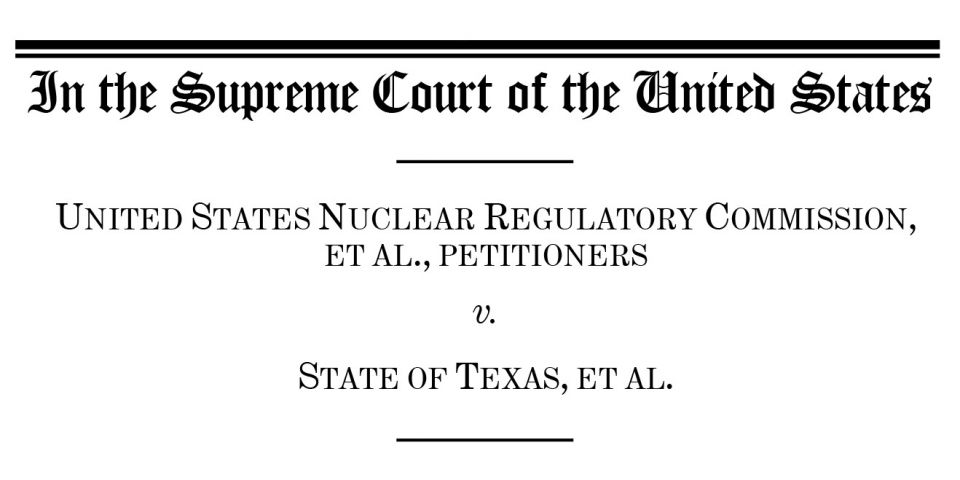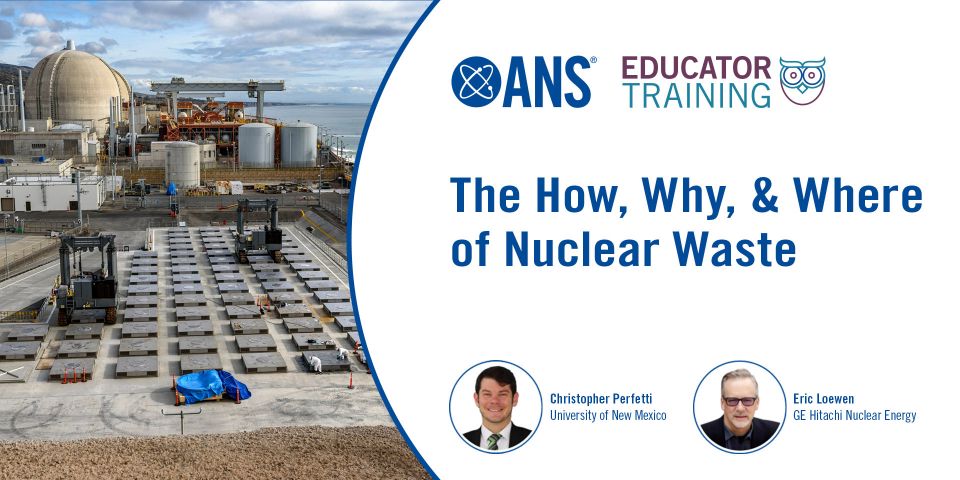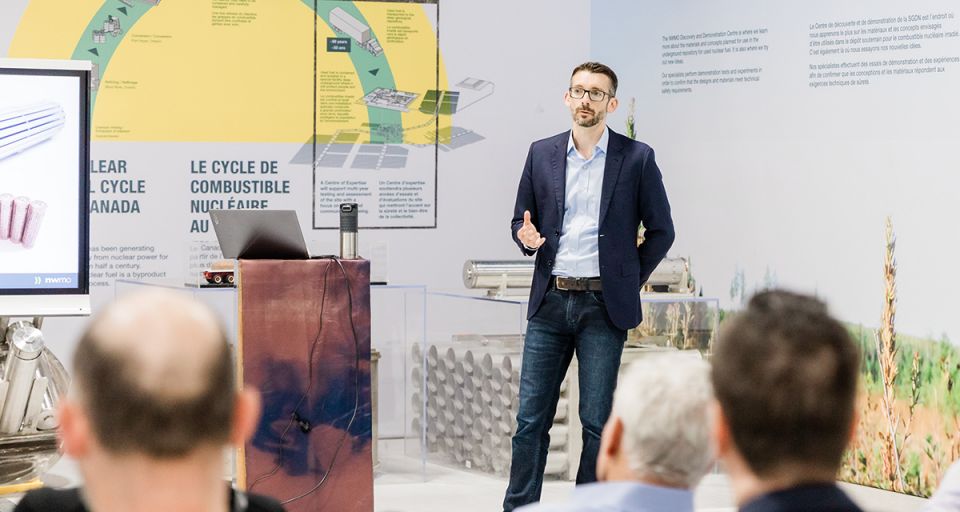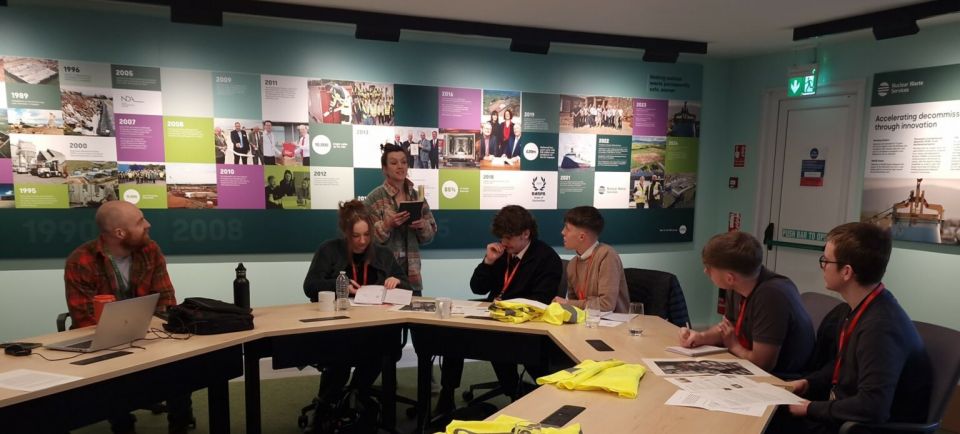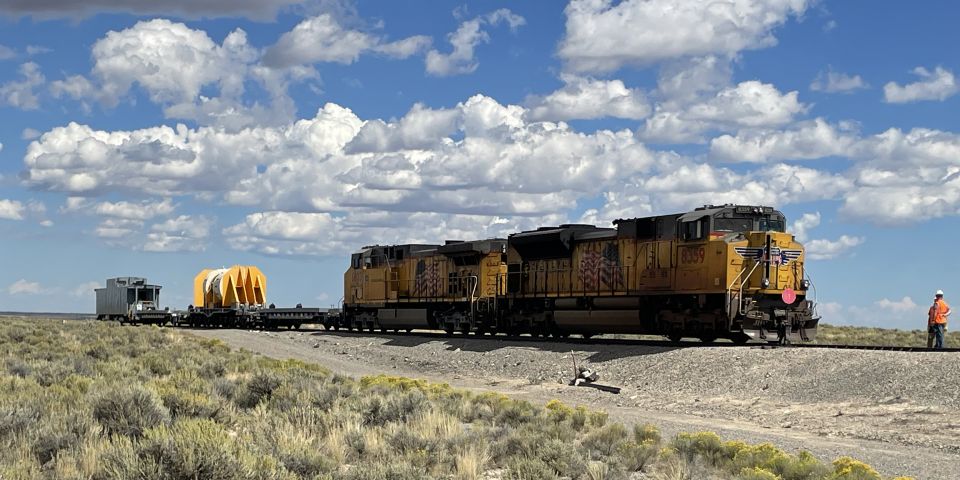A look back at the Blue Ribbon Commission
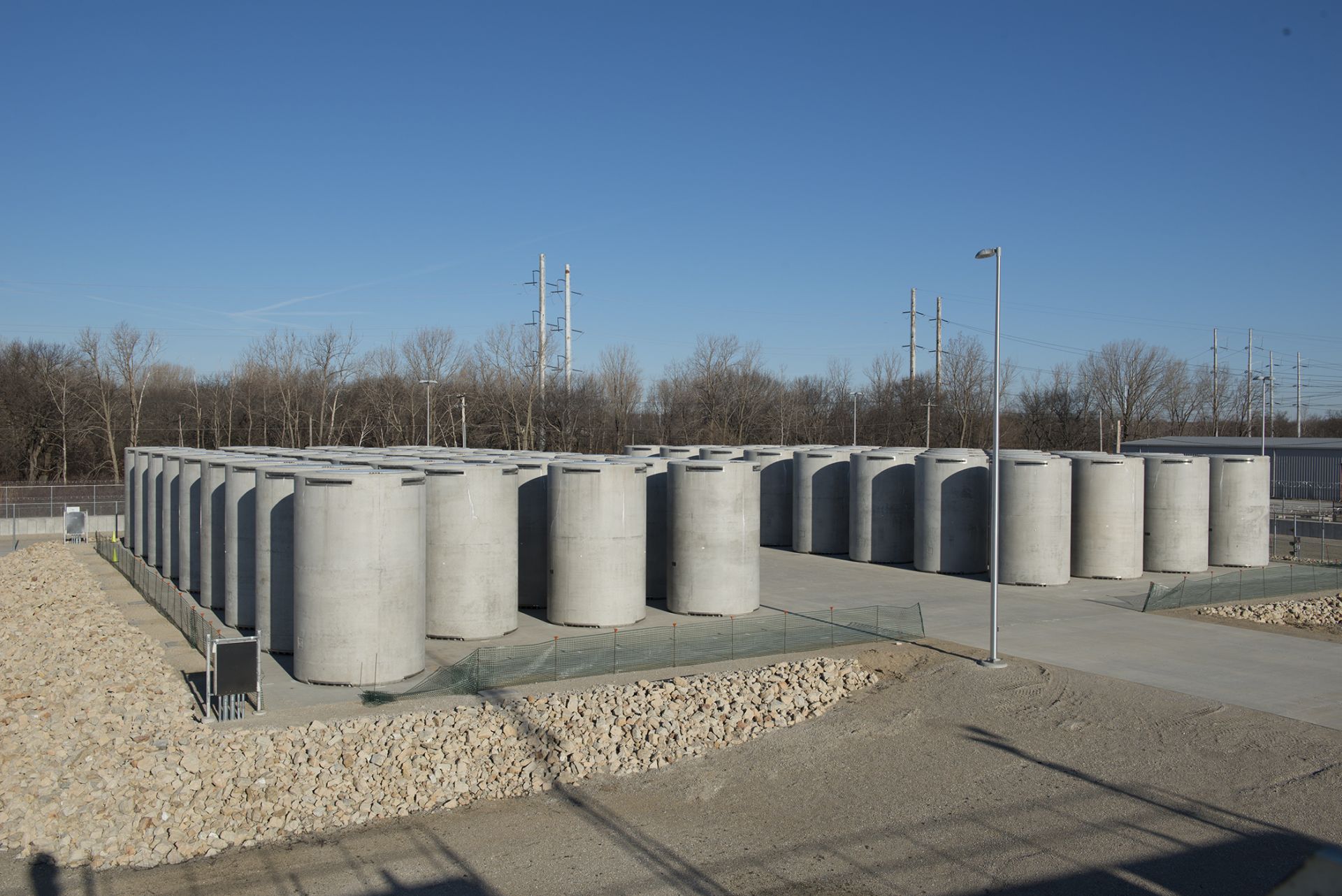
The deadline for submitting comments on the Department of Energy’s request for information on using a consent-based approach to siting federal facilities for the interim storage of spent nuclear fuel is Friday, March 4.
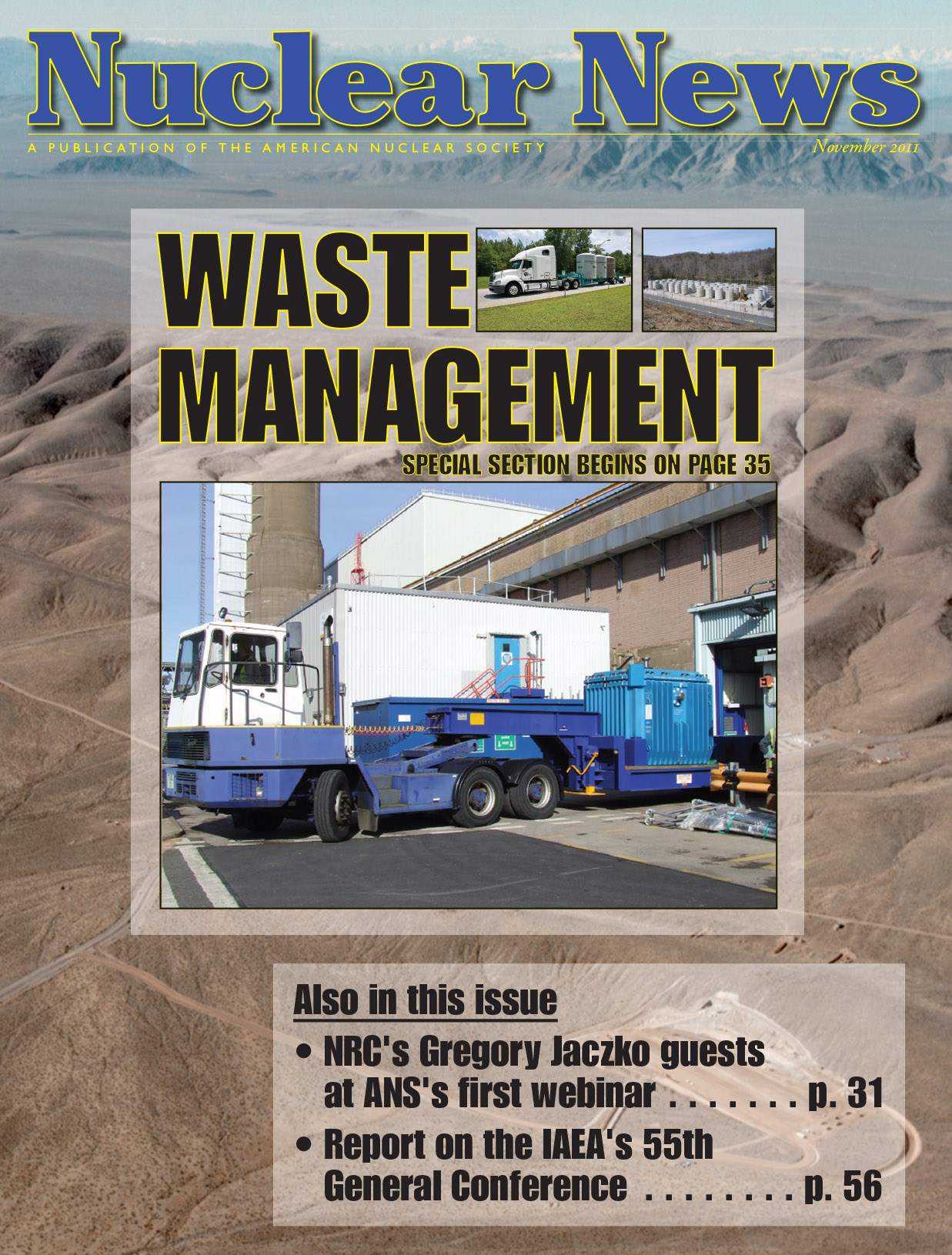 With that deadline in mind, for our #ThrowbackThursday post we take a look back at the November 2011 issue of Nuclear News, specifically at the article "What do we do with it all?" about the recommendations of the Blue Ribbon Commission on America’s Nuclear Future. It was, after all, the Blue Ribbon Commission, formed at the request of President Obama after he pulled the plug on the Yucca Mountain Project in 2009, that was the precursor of the DOE’s latest effort on consent-based siting.
With that deadline in mind, for our #ThrowbackThursday post we take a look back at the November 2011 issue of Nuclear News, specifically at the article "What do we do with it all?" about the recommendations of the Blue Ribbon Commission on America’s Nuclear Future. It was, after all, the Blue Ribbon Commission, formed at the request of President Obama after he pulled the plug on the Yucca Mountain Project in 2009, that was the precursor of the DOE’s latest effort on consent-based siting.
Recommendations: Among the seven recommendations the BRC made in its 2012 report was that the United States adopt a new, consent-based approach to siting nuclear waste management facilities. That recommendation was the basis for the DOE’s 2013 strategy for managing used nuclear fuel and high-level waste using a “phased, adaptive, and consent-based approach,” a strategy that has remained dormant until this latest request for information.
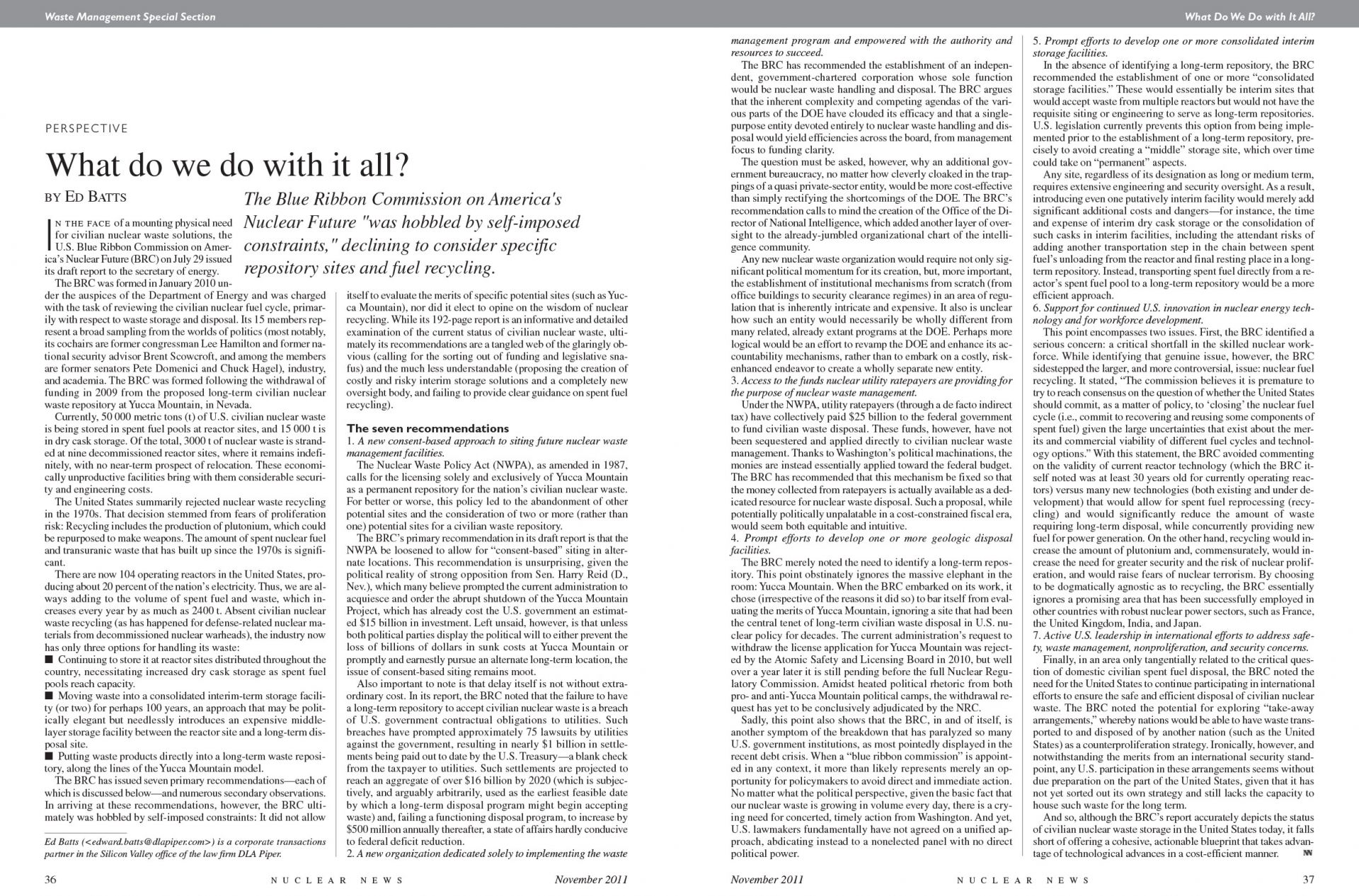 In his article reprinted below, Ed Batts, a corporate transactions partner in a Silicon Valley law firm, picks apart the draft report on the BRC’s seven recommendations. Batt’s main criticisms are that the BRC was “hobbled by self-imposed constraints” and that the report fails to offer a “cohesive, actionable blueprint.” Given that none of the report’s recommendations have been implemented in the decade since its release, it is difficult to argue with Blatt’s assessment.
In his article reprinted below, Ed Batts, a corporate transactions partner in a Silicon Valley law firm, picks apart the draft report on the BRC’s seven recommendations. Batt’s main criticisms are that the BRC was “hobbled by self-imposed constraints” and that the report fails to offer a “cohesive, actionable blueprint.” Given that none of the report’s recommendations have been implemented in the decade since its release, it is difficult to argue with Blatt’s assessment.
What do we do with it all?
by Ed Batts
In the face of a mounting physical need for civilian nuclear waste solutions, the U.S. Blue Ribbon Commission on America’s Nuclear Future (BRC) on July 29 issued its draft report to the secretary of energy.
The BRC was formed in January 2010 under the auspices of the Department of Energy and was charged with the task of reviewing the civilian nuclear fuel cycle, primarily with respect to waste storage and disposal. Its 15 members represent a broad sampling from the worlds of politics (most notably, its cochairs are former congressman Lee Hamilton and former national security advisor Brent Scowcroft, and among the members are former senators Pete Domenici and Chuck Hagel), industry, and academia. The BRC was formed following the withdrawal of funding in 2009 from the proposed long-term civilian nuclear waste repository at Yucca Mountain, in Nevada.
Currently, 50 000 metric tons (t) of U.S. civilian nuclear waste is being stored in spent fuel pools at reactor sites, and 15 000 t is in dry cask storage. Of the total, 3000 t of nuclear waste is stranded at nine decommissioned reactor sites, where it remains indefinitely, with no near-term prospect of relocation. These economically unproductive facilities bring with them considerable security and engineering costs.
The United States summarily rejected nuclear waste recycling in the 1970s. That decision stemmed from fears of proliferation risk: Recycling includes the production of plutonium, which could be repurposed to make weapons. The amount of spent nuclear fuel and transuranic waste that has built up since the 1970s is significant. There are now 104 operating reactors in the United States, producing about 20 percent of the nation’s electricity. Thus, we are always adding to the volume of spent fuel and waste, which increases every year by as much as 2400 t. Absent civilian nuclear waste recycling (as has happened for defense-related nuclear materials from decommissioned nuclear warheads), the industry now has only three options for handling its waste:
Continuing to store it at reactor sites distributed throughout the country, necessitating increased dry cask storage as spent fuel pools reach capacity.
Moving waste into a consolidated interim-term storage facility (or two) for perhaps 100 years, an approach that may be politically elegant but needlessly introduces an expensive middlelayer storage facility between the reactor site and a long-term disposal site.
Putting waste products directly into a long-term waste repository, along the lines of the Yucca Mountain model.
The BRC has issued seven primary recommendations—each of which is discussed below—and numerous secondary observations. In arriving at these recommendations, however, the BRC ultimately was hobbled by self-imposed constraints: It did not allow itself to evaluate the merits of specific potential sites (such as Yucca Mountain), nor did it elect to opine on the wisdom of nuclear recycling. While its 192-page report is an informative and detailed examination of the current status of civilian nuclear waste, ultimately its recommendations are a tangled web of the glaringly obvious (calling for the sorting out of funding and legislative snafus) and the much less understandable (proposing the creation of costly and risky interim storage solutions and a completely new oversight body, and failing to provide clear guidance on spent fuel recycling).
The seven recommendations
1. A new consent-based approach to siting future nuclear waste management facilities.
The Nuclear Waste Policy Act (NWPA), as amended in 1987, calls for the licensing solely and exclusively of Yucca Mountain as a permanent repository for the nation’s civilian nuclear waste. For better or worse, this policy led to the abandonment of other potential sites and the consideration of two or more (rather than one) potential sites for a civilian waste repository.
The BRC’s primary recommendation in its draft report is that the NWPA be loosened to allow for “consent-based” siting in alternate locations. This recommendation is unsurprising, given the political reality of strong opposition from Sen. Harry Reid (D., Nev.), which many believe prompted the current administration to acquiesce and order the abrupt shutdown of the Yucca Mountain Project, which has already cost the U.S. government an estimated $15 billion in investment. Left unsaid, however, is that unless both political parties display the political will to either prevent the loss of billions of dollars in sunk costs at Yucca Mountain or promptly and earnestly pursue an alternate long-term location, the issue of consent-based siting remains moot.
Also important to note is that delay itself is not without extraordinary cost. In its report, the BRC noted that the failure to have a long-term repository to accept civilian nuclear waste is a breach of U.S. government contractual obligations to utilities. Such breaches have prompted approximately 75 lawsuits by utilities against the government, resulting in nearly $1 billion in settlements being paid out to date by the U.S. Treasury—a blank check from the taxpayer to utilities. Such settlements are projected to reach an aggregate of over $16 billion by 2020 (which is subjectively, and arguably arbitrarily, used as the earliest feasible date by which a long-term disposal program might begin accepting waste) and, failing a functioning disposal program, to increase by $500 million annually thereafter, a state of affairs hardly conducive to federal deficit reduction.
2. A new organization dedicated solely to implementing the waste management program and empowered with the authority and resources to succeed.
The BRC has recommended the establishment of an independent, government-chartered corporation whose sole function would be nuclear waste handling and disposal. The BRC argues that the inherent complexity and competing agendas of the various parts of the DOE have clouded its efficacy and that a singlepurpose entity devoted entirely to nuclear waste handling and disposal would yield efficiencies across the board, from management focus to funding clarity.
The question must be asked, however, why an additional government bureaucracy, no matter how cleverly cloaked in the trappings of a quasi private-sector entity, would be more cost-effective than simply rectifying the shortcomings of the DOE. The BRC’s recommendation calls to mind the creation of the Office of the Director of National Intelligence, which added another layer of oversight to the already-jumbled organizational chart of the intelligence community.
Any new nuclear waste organization would require not only significant political momentum for its creation, but, more important, the establishment of institutional mechanisms from scratch (from office buildings to security clearance regimes) in an area of regulation that is inherently intricate and expensive. It also is unclear how such an entity would necessarily be wholly different from many related, already extant programs at the DOE. Perhaps more logical would be an effort to revamp the DOE and enhance its accountability mechanisms, rather than to embark on a costly, riskenhanced endeavor to create a wholly separate new entity.
3. Access to the funds nuclear utility ratepayers are providing for the purpose of nuclear waste management.
Under the NWPA, utility ratepayers (through a de facto indirect tax) have collectively paid $25 billion to the federal government to fund civilian waste disposal. These funds, however, have not been sequestered and applied directly to civilian nuclear waste management. Thanks to Washington’s political machinations, the monies are instead essentially applied toward the federal budget. The BRC has recommended that this mechanism be fixed so that the money collected from ratepayers is actually available as a dedicated resource for nuclear waste disposal. Such a proposal, while potentially politically unpalatable in a cost-constrained fiscal era, would seem both equitable and intuitive.
4. Prompt efforts to develop one or more geologic disposal facilities.
The BRC merely noted the need to identify a long-term repository. This point obstinately ignores the massive elephant in the room: Yucca Mountain. When the BRC embarked on its work, it chose (irrespective of the reasons it did so) to bar itself from evaluating the merits ofYucca Mountain, ignoring a site that had been the central tenet of long-term civilian waste disposal in U.S. nuclear policy for decades. The current administration’s request to withdraw the license application for Yucca Mountain was rejected by the Atomic Safety and Licensing Board in 2010, but well over a year later it is still pending before the full Nuclear Regulatory Commission. Amidst heated political rhetoric from both pro- and anti-Yucca Mountain political camps, the withdrawal request has yet to be conclusively adjudicated by the NRC.
Sadly, this point also shows that the BRC, in and of itself, is another symptom of the breakdown that has paralyzed so many U.S. government institutions, as most pointedly displayed in the recent debt crisis. When a “blue ribbon commission” is appointed in any context, it more than likely represents merely an opportunity for policymakers to avoid direct and immediate action. No matter what the political perspective, given the basic fact that our nuclear waste is growing in volume every day, there is a crying need for concerted, timely action from Washington. And yet, U.S. lawmakers fundamentally have not agreed on a unified approach, abdicating instead to a nonelected panel with no direct political power.
5. Prompt efforts to develop one or more consolidated interim storage facilities.
In the absence of identifying a long-term repository, the BRC recommended the establishment of one or more “consolidated storage facilities.” These would essentially be interim sites that would accept waste from multiple reactors but would not have the requisite siting or engineering to serve as long-term repositories. U.S. legislation currently prevents this option from being implemented prior to the establishment of a long-term repository, precisely to avoid creating a “middle” storage site, which over time could take on “permanent” aspects.
Any site, regardless of its designation as long or medium term, requires extensive engineering and security oversight. As a result, introducing even one putatively interim facility would merely add significant additional costs and dangers—for instance, the time and expense of interim dry cask storage or the consolidation of such casks in interim facilities, including the attendant risks of adding another transportation step in the chain between spent fuel’s unloading from the reactor and final resting place in a longterm repository. Instead, transporting spent fuel directly from a reactor’s spent fuel pool to a long-term repository would be a more efficient approach.
6. Support for continued U.S. innovation in nuclear energy technology and for workforce development.
This point encompasses two issues. First, the BRC identified a serious concern: a critical shortfall in the skilled nuclear workforce. While identifying that genuine issue, however, the BRC sidestepped the larger, and more controversial, issue: nuclear fuel recycling. It stated, “The commission believes it is premature to try to reach consensus on the question of whether the United States should commit, as a matter of policy, to ‘closing’ the nuclear fuel cycle (i.e., commit to recovering and reusing some components of spent fuel) given the large uncertainties that exist about the merits and commercial viability of different fuel cycles and technology options.” With this statement, the BRC avoided commenting on the validity of current reactor technology (which the BRC itself noted was at least 30 years old for currently operating reactors) versus many new technologies (both existing and under development) that would allow for spent fuel reprocessing (recycling) and would significantly reduce the amount of waste requiring long-term disposal, while concurrently providing new fuel for power generation. On the other hand, recycling would increase the amount of plutonium and, commensurately, would increase the need for greater security and the risk of nuclear proliferation, and would raise fears of nuclear terrorism. By choosing to be dogmatically agnostic as to recycling, the BRC essentially ignores a promising area that has been successfully employed in other countries with robust nuclear power sectors, such as France, the United Kingdom, India, and Japan.
7. Active U.S. leadership in international efforts to address safety, waste management, nonproliferation, and security concerns.
Finally, in an area only tangentially related to the critical question of domestic civilian spent fuel disposal, the BRC noted the need for the United States to continue participating in international efforts to ensure the safe and efficient disposal of civilian nuclear waste. The BRC noted the potential for exploring “take-away arrangements,” whereby nations would be able to have waste transported to and disposed of by another nation (such as the United States) as a counterproliferation strategy. Ironically, however, and notwithstanding the merits from an international security standpoint, any U.S. participation in these arrangements seems without due preparation on the part of the United States, given that it has not yet sorted out its own strategy and still lacks the capacity to house such waste for the long term.
And so, although the BRC’s report accurately depicts the status of civilian nuclear waste storage in the United States today, it falls short of offering a cohesive, actionable blueprint that takes advantage of technological advances in a cost-efficient manner.



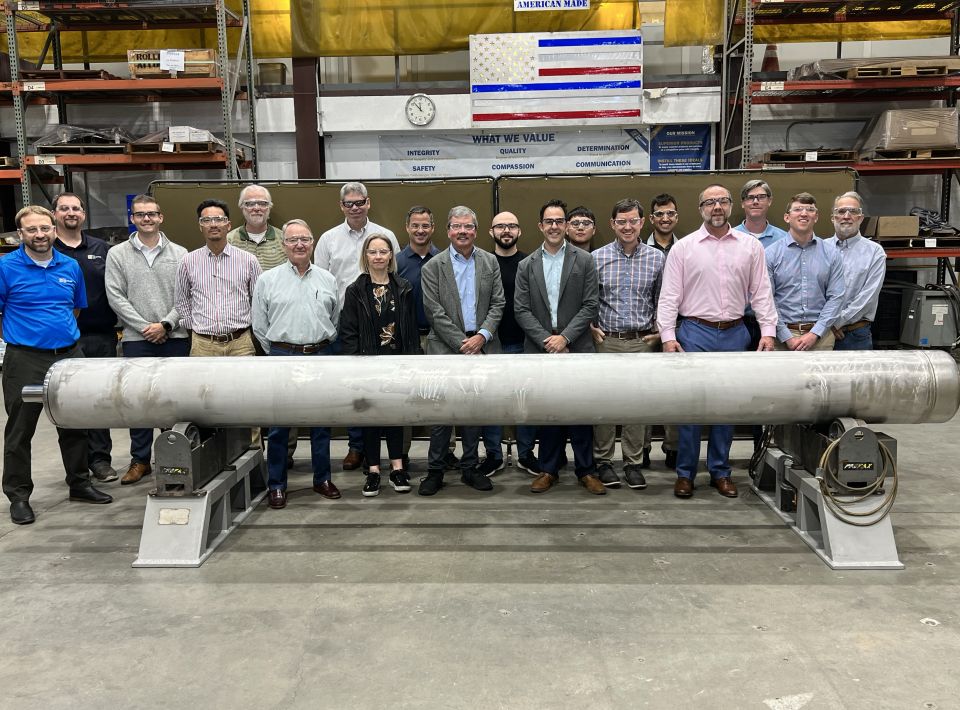 rotated.jpg)
